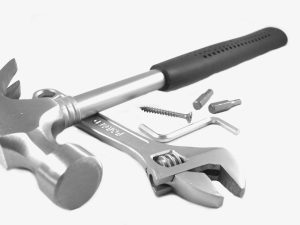The Retention Equation: Why Top Talent Stays
In today’s highly competitive job market, attracting and retaining top talent has become a critical challenge for organizations. Companies invest time, effort, and resources in recruiting the best employees, but what truly sets successful organizations apart is their ability to retain these top performers. The retention equation is a formula that reveals the key factors that help top talent stay in an organization. In this article, we will delve into the insights of the retention equation and understand why top talent stays in an organization.
The Importance of Retaining Top Talent
Retaining top talent is crucial for the success of any organization. High employee retention rates lead to a stable workforce with deep knowledge and expertise, which in turn positively impacts productivity, performance, and overall business results. Moreover, retaining top talent helps organizations save time and resources spent on recruiting, hiring, and training new employees.
The costs of employee turnover can also be significant. According to a study by the Society for Human Resource Management, the average cost of replacing an employee is six to nine months’ salary for high-level positions. Therefore, it is in the best interest of organizations to understand and implement the retention equation to retain their top talent.
The Three Components of the Retention Equation
According to research by Gallup, the retention equation is composed of three key factors: purpose, development, and recognition. These three components play a crucial role in determining whether an employee stays or leaves an organization.
Purpose
Purpose refers to the employees’ belief that they are making a meaningful contribution towards the organization’s goals and objectives. When employees feel that their work is meaningful and aligned with the company’s purpose, they are more likely to stay. In fact, a survey by LinkedIn found that 73% of employees who are fulfilled in their jobs are more likely to stay with their current company.
To give employees a sense of purpose, organizations should communicate their vision and values clearly. Employees should understand how their role contributes to the bigger picture and the impact their work has on the organization’s success.
Development
The second component of the retention equation is development, which refers to the opportunities for growth and progress within an organization. Employees, especially top talent, are always looking to improve and advance their careers. If an organization fails to provide opportunities for learning and development, employees may seek them elsewhere.
One way to develop employees is by providing regular performance feedback and creating a career path for them within the organization. This not only motivates employees to stay but also helps organizations groom their employees for future leadership roles.
Recognition
Recognition refers to acknowledging and appreciating employees for their hard work and contributions. Recognition can take various forms, such as verbal praise, bonuses, or promotions. When employees feel valued and appreciated, they are more likely to stay with an organization.
Organizations can create a culture of recognition by implementing a formal recognition program and encouraging managers to give regular positive feedback to their team members. This creates a positive work environment where employees feel motivated to perform their best.
Implementing the Retention Equation
The retention equation may seem like a simple formula, but implementing and maintaining it is a continuous process that requires commitment and effort from organizations. To effectively use the retention equation, organizations must have a thorough understanding of their employees’ needs and expectations.
Conducting regular employee surveys and gathering feedback can help organizations identify areas of improvement and tailor their retention strategies accordingly. Moreover, it is essential to ensure that the three components of the retention equation – purpose, development, and recognition – are not only present but also actively practiced in the organization’s culture and daily operations.
Conclusion
The retention equation is a powerful tool that can help organizations retain their top talent and achieve long-term success. By focusing on purpose, development, and recognition, organizations can create a work culture that fosters employee engagement, growth, and fulfillment. By investing in employee retention, organizations can not only save costs but also build a strong, dedicated, and talented workforce that drives their business towards success.









